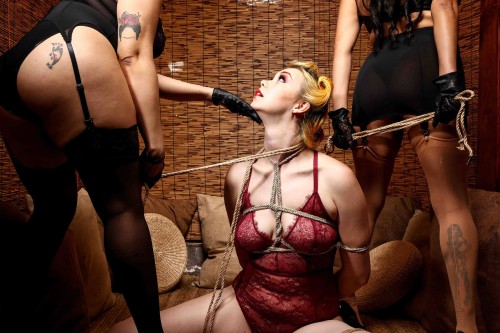
Most Popular
 Unleashing the Dark Side of the Big Apple: A Journey into the New York Dungeon
Unleashing the Dark Side of the Big Apple: A Journey into the New York Dungeon
New York City, the city that never sleeps, is known ...
Discovering A Pro Domme Near Me : A Guide To Finding The Right Match
Introduction to Professional DominatricesIn the world of BDSM, the figure ...
 Unlocking the World of Professional Dominance: A Guide to Finding a Pro Domme Near You
Unlocking the World of Professional Dominance: A Guide to Finding a Pro Domme Near You
In the realm of BDSM and adult entertainment, professional dominatrices ...



Shibari In NY: Exploring The Art Of Japanese Rope Bondage

In the heart of New York City, a unique and intriguing art form has been gaining popularity: Shibari, also known as Japanese rope bondage. This ancient practice, originating from Japan, has evolved into a modern form of artistic expression, self-discovery, and intimacy. In this blog, we will delve into the world of Shibari in NY, exploring its history, benefits, and the community that surrounds it.
History of Shibari
Shibari, which translates to "to tie" or "to bind," has its roots in 15th-century Japan. Initially used as a form of restraint and punishment, it later evolved into a spiritual and artistic practice. The art form was influenced by various Japanese disciplines, including Buddhism, Shintoism, and martial arts. In the 1990s, Shibari began to gain popularity in the Western world, with New York City becoming a hub for enthusiasts and practitioners.
Benefits of Shibari
Shibari is more than just a form of bondage; it's an experience that offers numerous benefits for both the binder and the bound. Some of the benefits include:
- Trust and intimacy: Shibari requires a deep level of trust between partners, fostering a strong bond and sense of connection.
- Relaxation and stress relief: The physical and emotional release experienced during Shibari can be meditative, promoting relaxation and reducing stress.
- Self-discovery: Shibari encourages self-reflection, allowing individuals to explore their boundaries, desires, and limitations.
- Artistic expression: Shibari is a form of performance art, with the bound individual becoming a living, breathing sculpture.
The Shibari Community in NY
New York City is home to a thriving Shibari community, with numerous studios, workshops, and events dedicated to the art form. The community is diverse, welcoming individuals from all backgrounds and experience levels. Some notable studios and organizations include:
- The Shibari Study Group: A community-driven organization offering workshops, classes, and events for Shibari enthusiasts.
- The Rope Dojo: A studio dedicated to teaching Shibari and other forms of rope bondage.
- Shibari NYC: A collective of artists and practitioners hosting events, workshops, and performances.
Events and Workshops
Throughout the year, NY hosts various Shibari events, workshops, and conferences. These gatherings provide opportunities for individuals to learn from experienced practitioners, network with like-minded individuals, and showcase their skills. Some popular events include:
- Shibari Con: An annual conference featuring workshops, performances, and lectures on Shibari and related topics.
- Rope Fest: A festival celebrating Shibari and other forms of rope bondage, with live performances, workshops, and vendors.
Conclusion
Shibari in NY is a vibrant and dynamic community, offering a unique blend of art, self-discovery, and intimacy. Whether you're a seasoned practitioner or curious newcomer, the city provides a welcoming and supportive environment to explore this fascinating art form. As Shibari continues to grow in popularity, it's essential to approach the practice with respect, safety, and an open mind. By doing so, we can ensure that this ancient art form continues to thrive and evolve in the heart of New York City.